The next Magic set's biomechanical nightmare was inspired by classical depictions of Hell
Magic: The Gathering's lead art director talks about the images you may have noticed at the top of those cards you like so much.
In Magic: The Gathering, the Phyrexians are the kind of villains who don't want to kill you because they'd rather remake you. Sure, the remaking process might kill you, but that's not the point of it. The point is to strip away everything you thought of as yourself and turn you into a twisted mirror image, becoming the thing you hate. Swings and roundabouts, really.
They're the villains you fight once, and then the second time they come at you with the faces of your friends and family among their ranks. They're the borg from Star Trek, but also the tyranids from 40K, the cenobites from Hellraiser, and the zombies from everything, all thrown together and wearing a fashionable new hat.

Magic's next expansion set, Phyrexia: All Will Be One, travels to New Phyrexia, the plane they've remade to their own liking. Body horror is a definite influence on the set's art. The Phyrexians assimilate their former enemies through a process called "compleating", perfecting their targets while also absorbing them into the larger biomass. It begins with an infection via glistening oil that mutates the body and warps the mind, and ends with surgical alteration that combines flesh with metal.
The end results aren't homogenous, because Phyrexians lack the hivemind that bad guys they resemble from other universes tend to have. Instead, they're factionalized and fractious, schisming and then being sutured back together. (Conveniently, their major divisions line up with Magic's colors. Imagine that!) Depending on which kind of Phyrexian compleats someone, they might end up a mixture of exposed red muscle and bone-white armor, or lose their limbs and be embedded in a gleaming metal juggernaut, or have their exposed head stapled to the top of a spider-crab. Dealer's choice.
None of them seem like particularly pleasant options. "Body horror has been identified with Phyrexians since their inception almost 30 years ago," says Ovidio Cartagena, lead art director for this set and several others coming later in the year. "This time around we designed many new types of Phyrexians, leaving in some of the body horror aspects but we finally get to see a 'fully compleated' world, where flesh has been eliminated or more successfully adapted into Phyrexian exteriors."
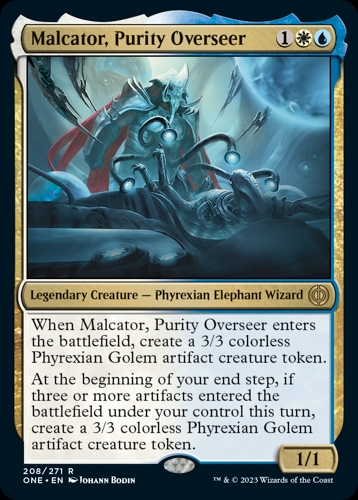
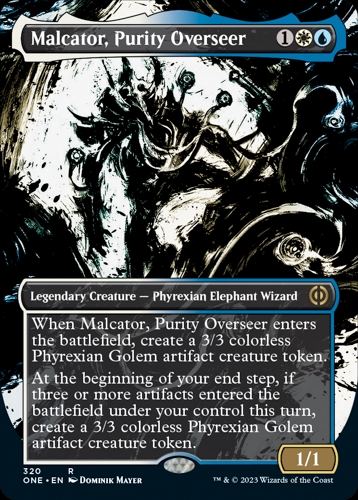
According to Cartagena, in imagining what an entire world designed by Phyrexians would look like, "a lot of inspiration was drawn from several illustrated versions of the Divine Comedy, as well as Hieronymus Bosch and his 'spiritual successors' of the 20th and 21st centuries."
Dante's Divine Comedy is an epic poem about a descent through Hell, then rising through Purgatory and finally Paradise. It's the first book, Inferno, that people tend to remember thanks to its vivid mapping of a Hell, where every circle houses different varieties of sinner and the demons responsible for their punishments. The heaven made by Phyrexians would resemble our Hell, Cartagena figured. Sure enough, the atlas of New Phyrexia looks like a colorized and modernized version of Antonio Manetti's woodcuts of the Inferno.
Keep up to date with the most important stories and the best deals, as picked by the PC Gamer team.
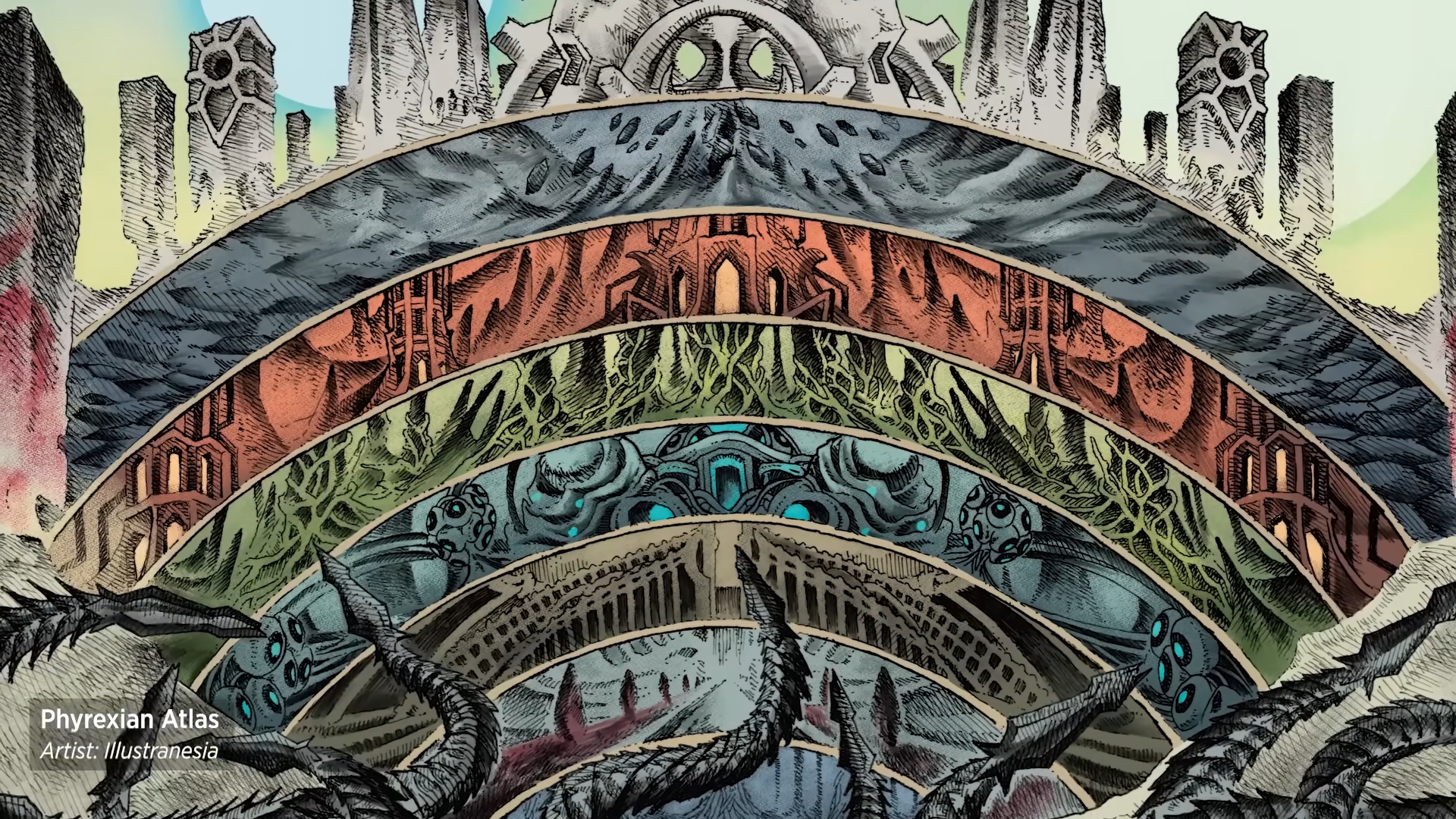
The poster girl for Phyrexia: All Will Be One is Elesh Norn, Grand Cenobite of the Machine Orthodoxy faction, from a layer of New Phyrexia called the Fair Basilica. She's the one with the ungainly headgear that looks like a wimple grew wings, and her followers go for a look that's informed as much by Catholic iconography and porcelain dolls as insects and anatomy lessons.
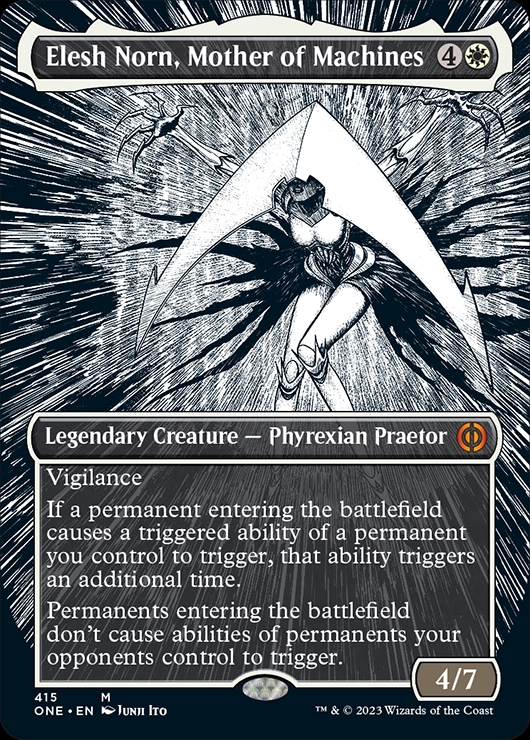
"Elesh Norn's hubris is evident in the beauty of her own faction and environments," Cartagena says, "so I wanted to see a villain that was both scary and appealing."
That's what Junji Ito delivered. The famed creator of horror manga like Uzumaki and Tomie turned in alternate art for Elesh Norn that saw her immediately labeled "panharmommycon" on the internet, in reference to the Parnharmonicon card and the fact the internet can be horny for anything.
"Junji Ito is a legend, and it's an honor to be able to say that he's illustrated a Magic: The Gathering card for Phyrexia," Cartagena says. "When working with an artist of this caliber, you can imagine they are given a lot of creative freedom."
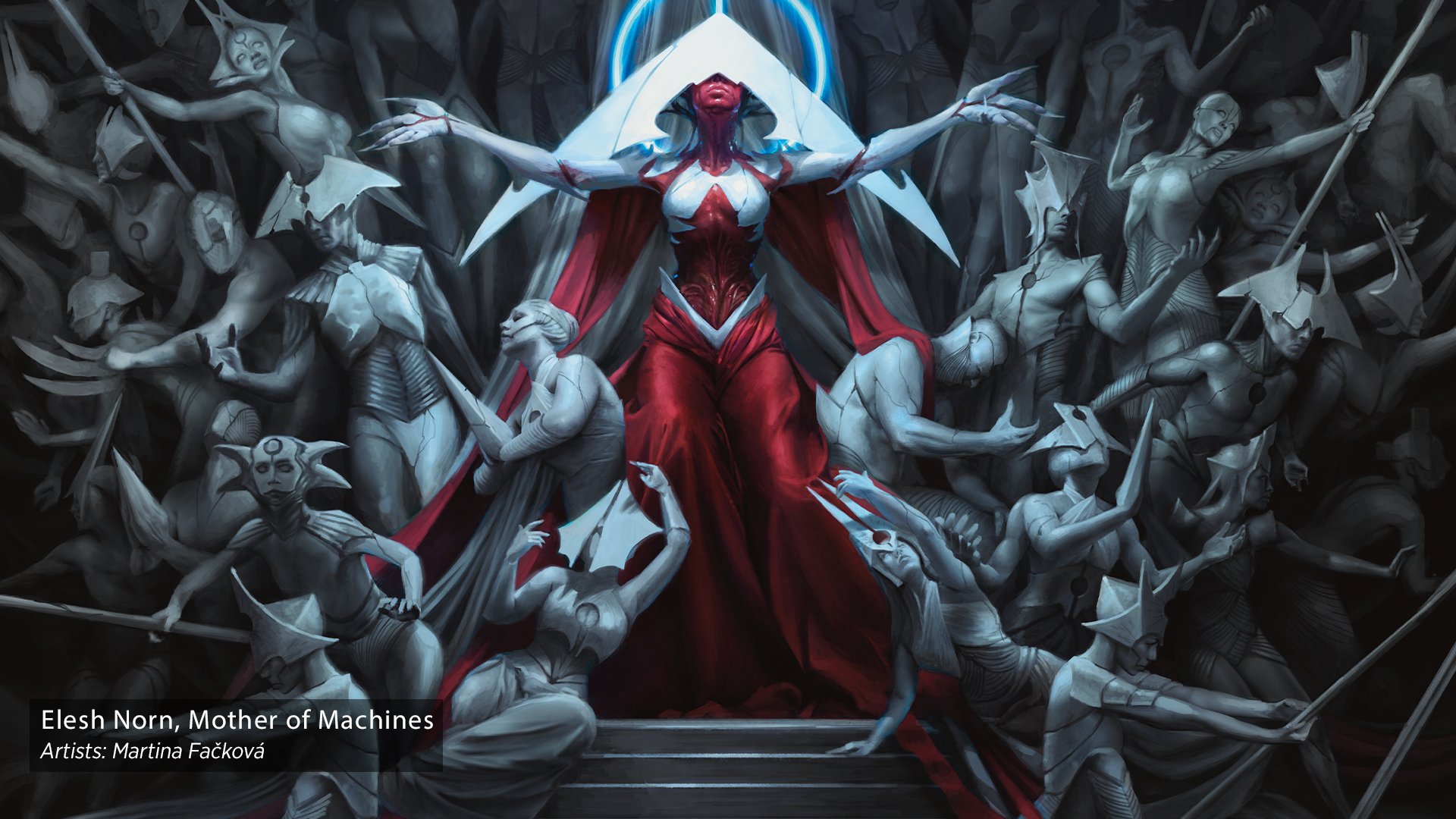
Elesh Norn also received a treatment that surrounds her with marble statues as dramatically posed as any mannerist sculpture or crowd photo tagged with "accidental Renaissance". The illustration by Martina Fačková was a specific request of Cartagena's, who says it was "informed by a scene in Dante's second circle of Hell, where souls are blown about in whirlwinds, and has been illustrated by William Blake, Gustave Doré, and others.
"Of course, mannerist art was a great inspiration, since my art training comes from the classical tradition and those sensibilities fit in very well with fantasy art," Cartagena said.
Cartagena was pleased with how the image turned out, and it's shown up in various marketing material as well as on a card. Which is a wonderful result for what he describes as an "easter egg" for classical art. "Keep your eye out for other references to the Divine Comedy in the art; I've found it astonishing how a lot of that classicism fits nicely into a biomechanical hellscape."
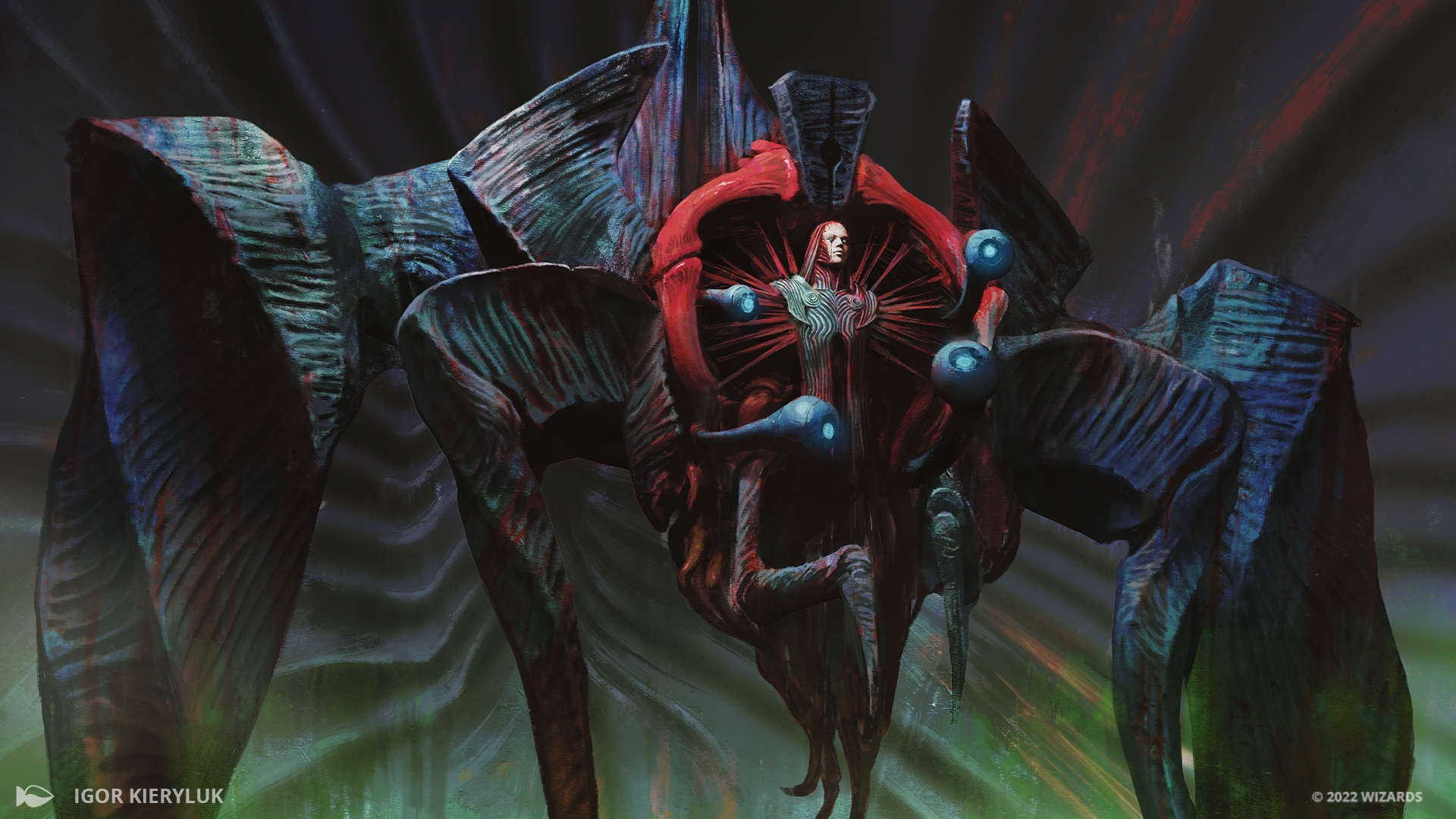
It's a shame that some players will only see these works of art at the top half of a card they glance at before playing, and I wish Arena had a gallery for full-screen viewing. (Maybe when it comes to Steam later this year?) But Cartagena notes that there are plenty of other ways people can see these pictures, and the artists he works with contribute art that deserves to be seen in a variety of ways.
"These arts are always seen in different contexts besides the cards, like in prints, playmats, websites, galleries, etcetera," he says. "That makes me very happy. There are several masterpieces in this release that deserve thoughtful observation."
Phyrexia: All Will Be One will launch in Arena on February 7, and in paper form on February 10. Prerelease events will run from February 3–9, and you can use the locator to find one near you.

Jody's first computer was a Commodore 64, so he remembers having to use a code wheel to play Pool of Radiance. A former music journalist who interviewed everyone from Giorgio Moroder to Trent Reznor, Jody also co-hosted Australia's first radio show about videogames, Zed Games. He's written for Rock Paper Shotgun, The Big Issue, GamesRadar, Zam, Glixel, Five Out of Ten Magazine, and Playboy.com, whose cheques with the bunny logo made for fun conversations at the bank. Jody's first article for PC Gamer was about the audio of Alien Isolation, published in 2015, and since then he's written about why Silent Hill belongs on PC, why Recettear: An Item Shop's Tale is the best fantasy shopkeeper tycoon game, and how weird Lost Ark can get. Jody edited PC Gamer Indie from 2017 to 2018, and he eventually lived up to his promise to play every Warhammer videogame.

